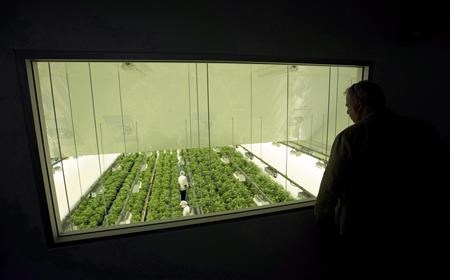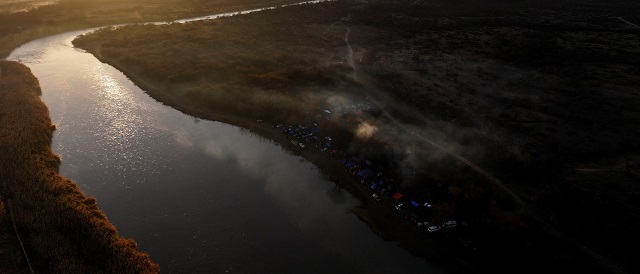Alberta
Canopy Growth reports $648 million net loss in Q4 as it parts way with BioSteel staff

Canopy Growth Corp.’s chief executive said the company has made management changes and parted ways with some staff as it continues to review its BioSteel business after uncovering “material misstatements” in the sports drink unit’s previous financial filings.
“Based on the results of the review, we’ll be implementing several remedial actions to strengthen our controls for the BioSteel business,” David Klein, chief executive of the Smiths Falls, Ont.-based cannabis company, said on a Thursday call with analysts.
“We felt it was important to act swiftly to provide stability to the business at this pivotal time, so to this effect, we have exited several members of the BioSteel leadership team and are considering all legal remedies available to us including litigation to recover damages and costs associated with and resulting from the findings of the BioSteel review.”
His remarks came after Canopy promised in May to refile three of its past quarterly financial statements because of misstatements linked to BioSteel, a brand of dietary supplement products targeting athletes.
The misstatements were in its first-, second- and third-quarter filings from 2022 and included sales information from that period which Canopy said in regulatory filings “should no longer be relied upon.”
It discovered the misstatements when it was preparing its financial results for the financial year ended March 31, and determined on May 4 that there were errors in its filings after a review of BioSteel results with independent external counsel and forensic accountants.
Canopy now says the sales misstatements found are linked to BioSteel’s “timing and amount of revenue recognition.”
The company revealed new details about the misstatements as it released its fourth-quarter and full-year results Thursday. Canopy’s fourth-quarter net loss amounted to $648 million, $59 million more than the loss it incurred a year earlier.
It attributed much of the loss to $164 million in asset impairment and restructuring costs, but says those costs were partially offset by improved gross margins.
The corrected numbers for BioSteel resulted in a decrease of roughly $10 million in net revenue for the company’s 2022 financial year, or about two per cent of its total net revenue.
For the nine months ended December 31, 2022, Canopy said the correction resulted in a decrease of about $14 million in net revenue or four per cent of total consolidated revenue.
“Despite this, we have great confidence in the BioSteel brand, which saw a 101 per cent revenue increase in fiscal (2023),” Klein said.
Canopy also noted that BioSteel is continuing to gain market share in Canada, especially through NHL partnerships.
Meanwhile, Canopy is continuing with a transformation plan for its overall business that included the departure of 800 workers — roughly 35 per cent of its workforce — in February.
At the time, it also planned to wind down 1 Hershey Dr. in Smiths Falls, Ont., its flagship facility where chocolate company Hershey once had a factory, and move post-production flower activity to a building across the street.
Canopy said it would cease to source flower from its Mirabel, Que., facility, which is owned and operated through Les Serres Vert Cannabis Inc., a joint venture partnership between the company and Les Serres Stephane Bertrand Inc., a tomato greenhouse operator.
Canopy previously purchased pot from the joint venture, but will cease that activity and now move to a more flexible sourcing strategy to ensure Quebec-grown products are brought to consumers in the province.
Consolidation was also planned for its Kincardine, Ont. and Kelowna, B.C. sites.
Canopy’s net revenue for the period ended March 31 totalled $88 million, 14 per cent lower than the revenue reported a year prior.
Canopy’s adjusted loss for the quarter was $96 million, a $36 million improvement from its negative adjusted earnings before interest, taxes, depreciation, and amortization a year earlier.
This report by The Canadian Press was first published June 22, 2023.
Companies in this story: (TSX:WEED)
Tara Deschamps, The Canadian Press
Alberta
Alberta government should eliminate corporate welfare to generate benefits for Albertans

From the Fraser Institute
By Spencer Gudewill and Tegan Hill
Last November, Premier Danielle Smith announced that her government will give up to $1.8 billion in subsidies to Dow Chemicals, which plans to expand a petrochemical project northeast of Edmonton. In other words, $1.8 billion in corporate welfare.
And this is just one example of corporate welfare paid for by Albertans.
According to a recent study published by the Fraser Institute, from 2007 to 2021, the latest year of available data, the Alberta government spent $31.0 billion (inflation-adjusted) on subsidies (a.k.a. corporate welfare) to select firms and businesses, purportedly to help Albertans. And this number excludes other forms of government handouts such as loan guarantees, direct investment and regulatory or tax privileges for particular firms and industries. So the total cost of corporate welfare in Alberta is likely much higher.
Why should Albertans care?
First off, there’s little evidence that corporate welfare generates widespread economic growth or jobs. In fact, evidence suggests the contrary—that subsidies result in a net loss to the economy by shifting resources to less productive sectors or locations (what economists call the “substitution effect”) and/or by keeping businesses alive that are otherwise economically unviable (i.e. “zombie companies”). This misallocation of resources leads to a less efficient, less productive and less prosperous Alberta.
And there are other costs to corporate welfare.
For example, between 2007 and 2019 (the latest year of pre-COVID data), every year on average the Alberta government spent 35 cents (out of every dollar of business income tax revenue it collected) on corporate welfare. Given that workers bear the burden of more than half of any business income tax indirectly through lower wages, if the government reduced business income taxes rather than spend money on corporate welfare, workers could benefit.
Moreover, Premier Smith failed in last month’s provincial budget to provide promised personal income tax relief and create a lower tax bracket for incomes below $60,000 to provide $760 in annual savings for Albertans (on average). But in 2019, after adjusting for inflation, the Alberta government spent $2.4 billion on corporate welfare—equivalent to $1,034 per tax filer. Clearly, instead of subsidizing select businesses, the Smith government could have kept its promise to lower personal income taxes.
Finally, there’s the Heritage Fund, which the Alberta government created almost 50 years ago to save a share of the province’s resource wealth for the future.
In her 2024 budget, Premier Smith earmarked $2.0 billion for the Heritage Fund this fiscal year—almost the exact amount spent on corporate welfare each year (on average) between 2007 and 2019. Put another way, the Alberta government could save twice as much in the Heritage Fund in 2024/25 if it ended corporate welfare, which would help Premier Smith keep her promise to build up the Heritage Fund to between $250 billion and $400 billion by 2050.
By eliminating corporate welfare, the Smith government can create fiscal room to reduce personal and business income taxes, or save more in the Heritage Fund. Any of these options will benefit Albertans far more than wasteful billion-dollar subsidies to favoured firms.
Authors:
Alberta
Official statement from Premier Danielle Smith and Energy Minister Brian Jean on the start-up of the Trans Mountain Pipeline

-

 Energy2 days ago
Energy2 days agoBiden Has Taken More Than 200 Actions Against Domestic Oil, New Report Says
-

 Opinion2 days ago
Opinion2 days agoMisleading polls may produce more damaging federal policies
-

 International1 day ago
International1 day agoTrump campaign says he will pardon Jan. 6 prisoners on ‘case-by-case basis’ if re-elected
-

 conflict1 day ago
conflict1 day agoNYPD says protesters had weapons, gas masks and ‘Death to America!’ pamphlets
-

 illegal immigration23 hours ago
illegal immigration23 hours agoBiden’s DOJ Threatens To Sue Another State For Enforcing Immigration Law
-

 Economy22 hours ago
Economy22 hours ago‘Gambling With The Grid’: New Data Highlights Achilles’ Heel Of One Of Biden’s Favorite Green Power Sources
-

 ESG20 hours ago
ESG20 hours agoTennessee Taking Lead In Protecting Civil Rights And Free Enterprise—And Stopping Political Debanking
-

 illegal immigration1 day ago
illegal immigration1 day agoMore Chinese Illegal Migrants Apprehended At Southern Border In Two Days Than In All Of 2021: REPORT










